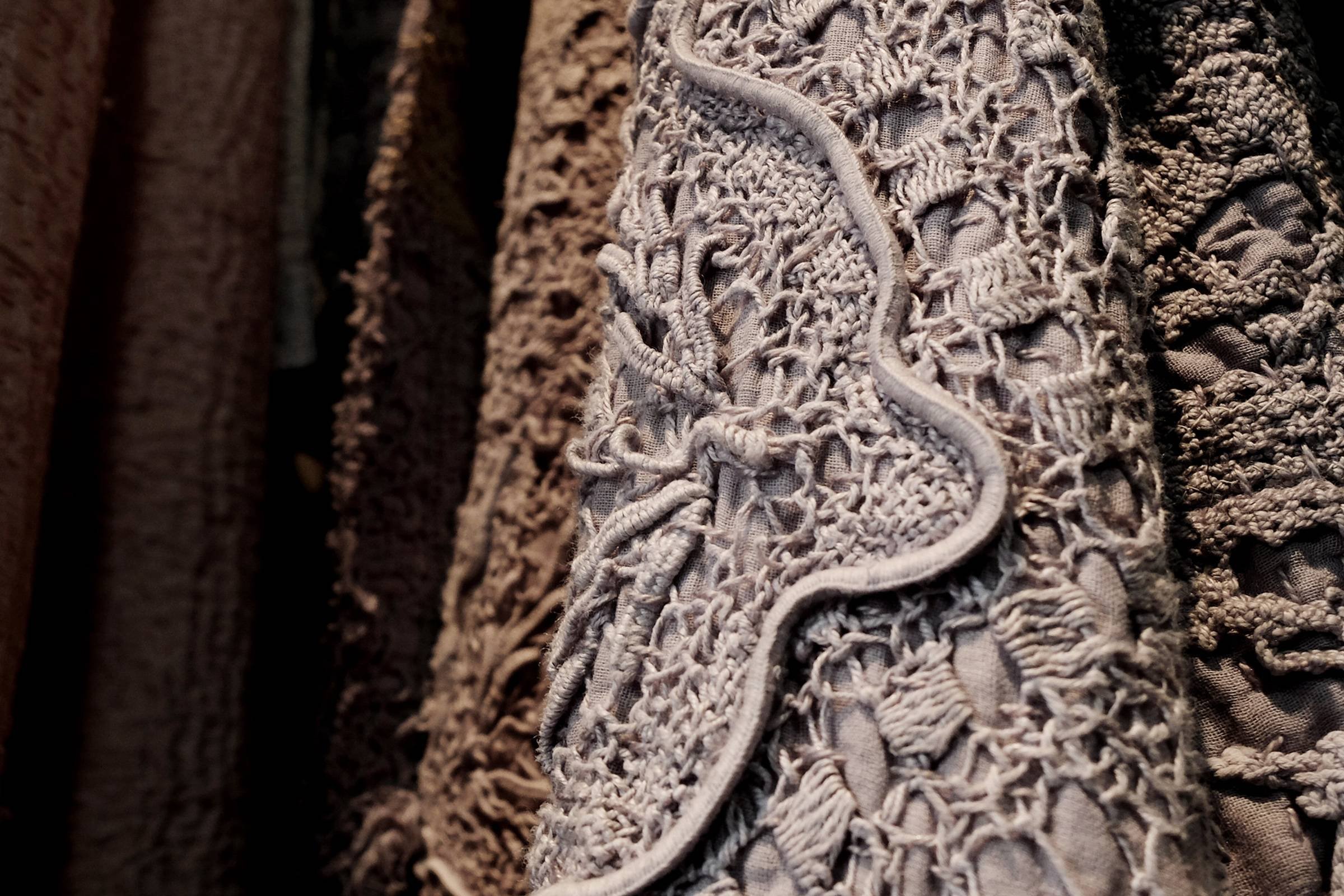
Disintegration and becoming
by Victoria Thomas
In her alarming 2021 book, “UNRAVELED: The Life and Death of a Garment,” (Penguin/Random House) author Maxine Bédat states, “There really is no such thing as sustainable fashion…This perpetuates a notion that we can buy our way into sustainability, and that it’s just a matter of purchasing this thing over that. This is not the case. The most sustainable thing by far is to not buy the thing at all.” (Perish the thought.)
The book follows the life of a pair of jeans, from the India- or Texas-grown cotton to the finishing factories in Dhaka or Shaoxing to retailers in Europe, Canada and the USA, then eventually on to Ghana, a nearly circular journey of thousands of miles, merrily burning fossil fuel along the way. Every year, the U.S. exports more than a billion pounds of used clothing, much of it funneled through Goodwill, Salvation Army, and other spots where we drop our unloved togs which no longer “spark joy.” These garments often find their way to Kantamanto, located in Accra, Ghana’s capital city. It’s one of the largest second-hand markets in West Africa, and the recycled clothing arrives there perhaps in a misguided spirit of Western philanthropy. Because people in the developing world need clothes, right? They do, but the trouble is that the disposable clothes that land in refrigerator-sized bales in Kantamanto are of such poor quality that they really can’t be resold or worn again. And so, the jeans of Bédat’s narrative may find their final resting place in the Kpone landfill about 25 miles Accra. Or worse. Unregulated freelance trash collectors take on some of the load, dumping it in waterways, burying it on beaches, burning it in open lots, or simply depositing the pile by the side of the road. This dumping led to a cholera outbreak in 2014. Well, then! What, one wonders, does Bédat wear in public? Perhaps in social protest, like Lady Godiva, she takes to the streets unclad.
Enlightened and resourceful people have pushed back against consumerist glut for decades. Although furnishings, not apparel, were her idiom, interior designer Rachel Ashwell ruled the 1980s with Shabby Chic. But Ashwell’s ingenious repurposing quickly gave way to profit-hungry manufacturing. Although Ashwell started out by snapping up chipped picture frames and scuffed end-tables at flea markets, then painting them in her signature dusty, sugary shades, Tar-jay and other retail giants soon began churning out pre-distressed Shabby Chic items to simplify the shopping process. It was just easier to buy new, endearingly “pre-vintaged” merch versus cruising every yard sale in town.
Fashion gets an uneven report card when it comes to approaching sustainability. Yes, Stella McCartney and a few others have made an inspired go at it, quite apart from amusing garments made from trash: discarded styrofoam cups, gum wrappers, paper plates, beer can pull-tabs, Pantone swatches and Tupperware lids. Possibly funky festival or Halloween costume fodder, but nothing you’d wear IRL.
As always, there are glimmers of hope, beckoning like strands of lurex glinting through the weave. As we go to press, California Senator Josh Newman (D-Fullerton) has just introduced SB 707, a bill to create a statewide collection and recycling program for textiles. The fibers within most fabric items, if properly sorted and processed, are highly suitable for recycling and repurposing into new products. SB 707 will require producers to implement an end-to-end system to optimize the repair or recycling of textiles, including apparel, accessories, handbags, backpacks, draperies, shower curtains, furnishings, upholstery, bedding, towels, napkins and tablecloths.
In fairness, clever people have always repurposed materials, usually out of necessity. This repurposing has generally carried with it a certain stigma of scarcity, poverty.
Take Lapland. It’s no longer called that (use Suomi or Finland, please). But for centuries, Scandinavians of the more Europeanized “Three Crowns” -- Sweden, Norway, Denmark -- regarded their northeastern cousins as barely civilized, dressed in much-mended rags, “lapp” meaning a patch in the local dialect, and thus referred to them as Lappish or Laplanders.
Closer to home, Dolly Parton sings about her “Coat of Many Colors,” a line familiar to readers of the King James Version of the Bible as describing the amazing technicolor dreamcoat made for Joseph as the best-loved child of Israel (Genesis 37:3). In Dolly’s case, the song describes a coat lovingly sewn by her mother from a rainbow of rags, a garment which elicited taunts and teasing from fellow students. Patchwork flourished without shame in 19th century America, where frugal women repurposed feed and flour sacks into warm, durable quilts of shooting stars, bear paws, rail fences, log cabins and flying geese, stitched by hand (originally) with colorful names like the Drunkard’s Path, Road to Kansas, and the Arkansas Traveler. More recently, hippie seamstresses (I was one of them) crafted opulent skirts of dozens of pieced-together men’s neckties. Simpler bobo skirts were made of split-open pairs of well-worn Levi 501’s, sweetened with wedges of thrift-store wedding gowns inserted at the inseams.
And this is the unlikely point of entry for the genius of Walid al Damirji, the Swiss-born, British Iraqi designer whose mantra is “the luxury of zero waste,” who occasionally uses fragments of vintage linen and cotton patchwork quilts in his creations.




But unlike our hard-scrapple foremothers, @bywalidoflondon isn’t concerned with pinching pennies: he prices his luxe, textile collages, as he says, “to last.” His magpie creations aren’t about saving money, but rather about preserving the stories told through handwork, especially embroidery. A technique which his works often feature is what’s called kantha in India, the simplest stitch in the language of needle and thread: the ancient running stitch. The word kantha arises from the Sanskrit, kontha, meaning rags. With origins dating back to 1500 BCE, kantha began among rural women in the Bengali region, today known as the eastern Indian states of West Bengal, Orissa, and Bangladesh. Depending upon the elements used, Walid’s atelier then may dye the assembled piece, using unifying color to create a cohesive whole from disparate elements.
Walid’s currency is the flotsam and jetsam of crumbled dynasties and long-lost eras, especially Chinese, French, and British, taking fragments of once-grand tapestries and luxury textiles and reinforcing them with new backing fortified via the humble kantha stitch. Although Walid does occasionally make use of folksy prairie patchworks and even weathered denim, his palette when rag-picking leans more toward the ancient regime than Americana. Most emblematic of the Walid vision is the repurposing of ladies’ kid gloves from a gentler time, now used by the artist to create everything from jaunty caps and messenger bags to weirdly sensuous chair upholstery.

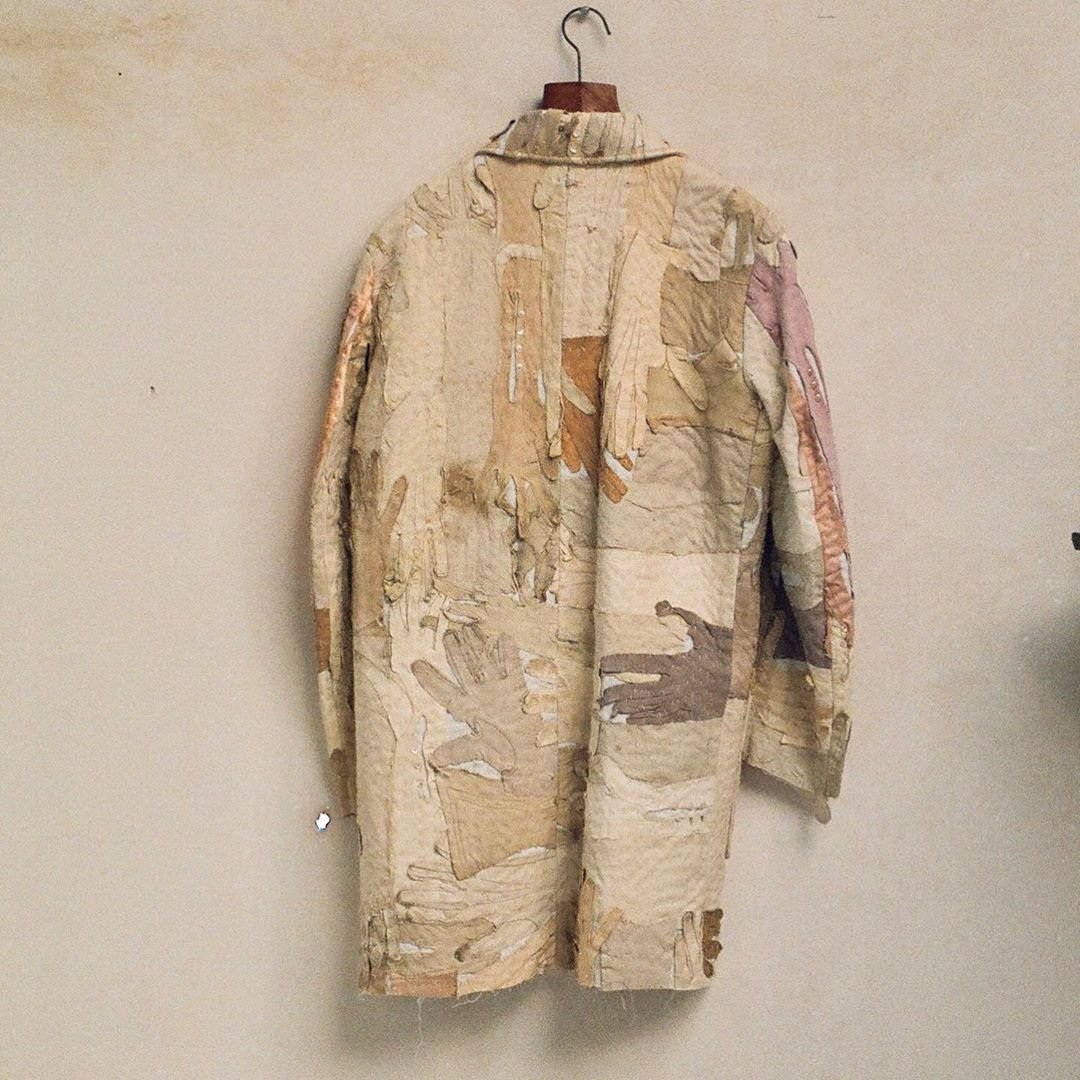
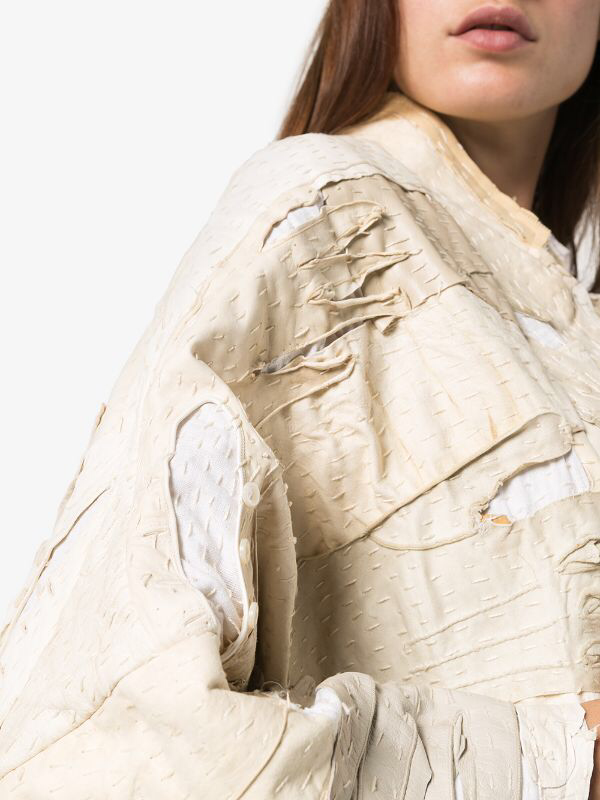
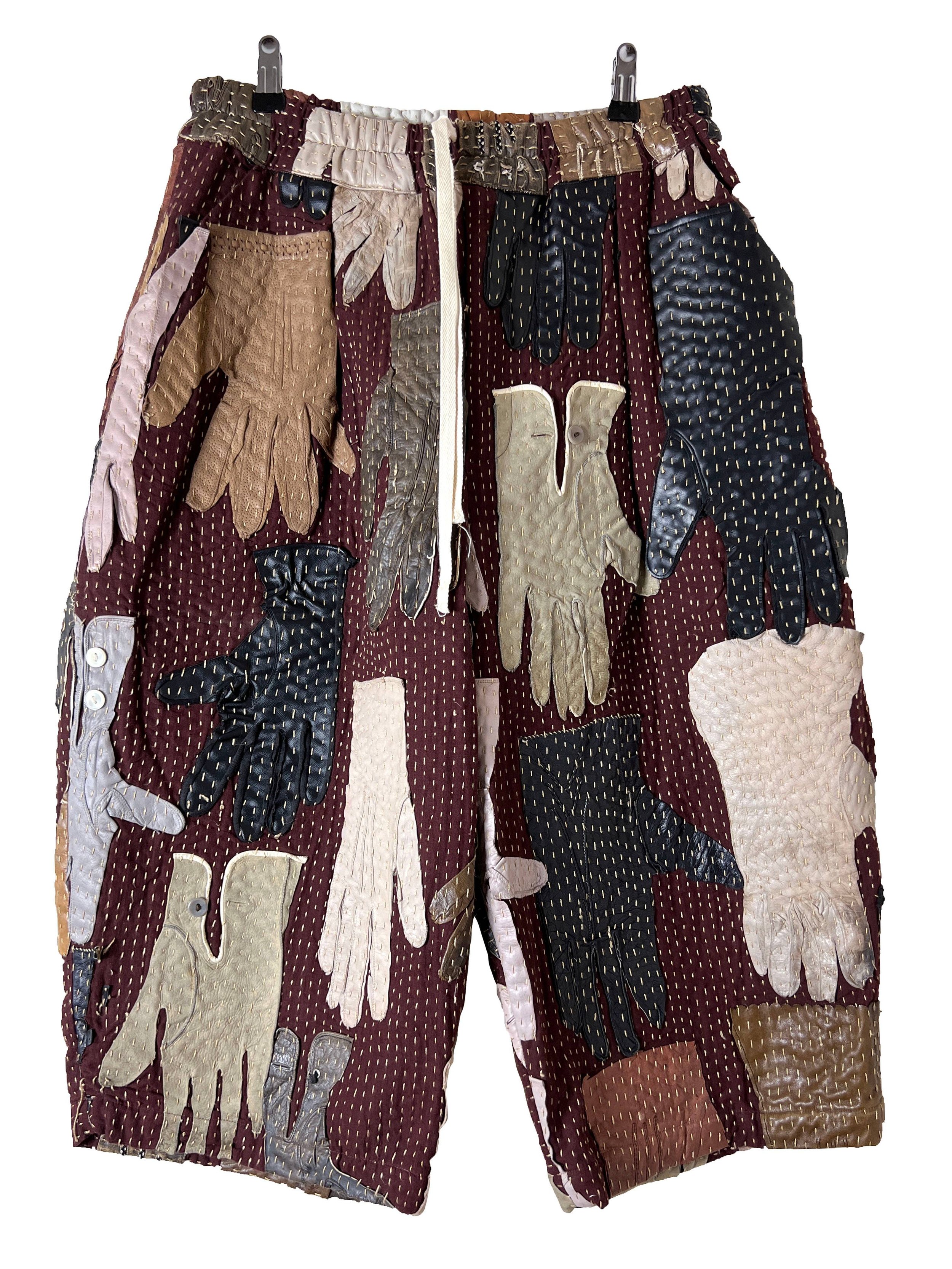
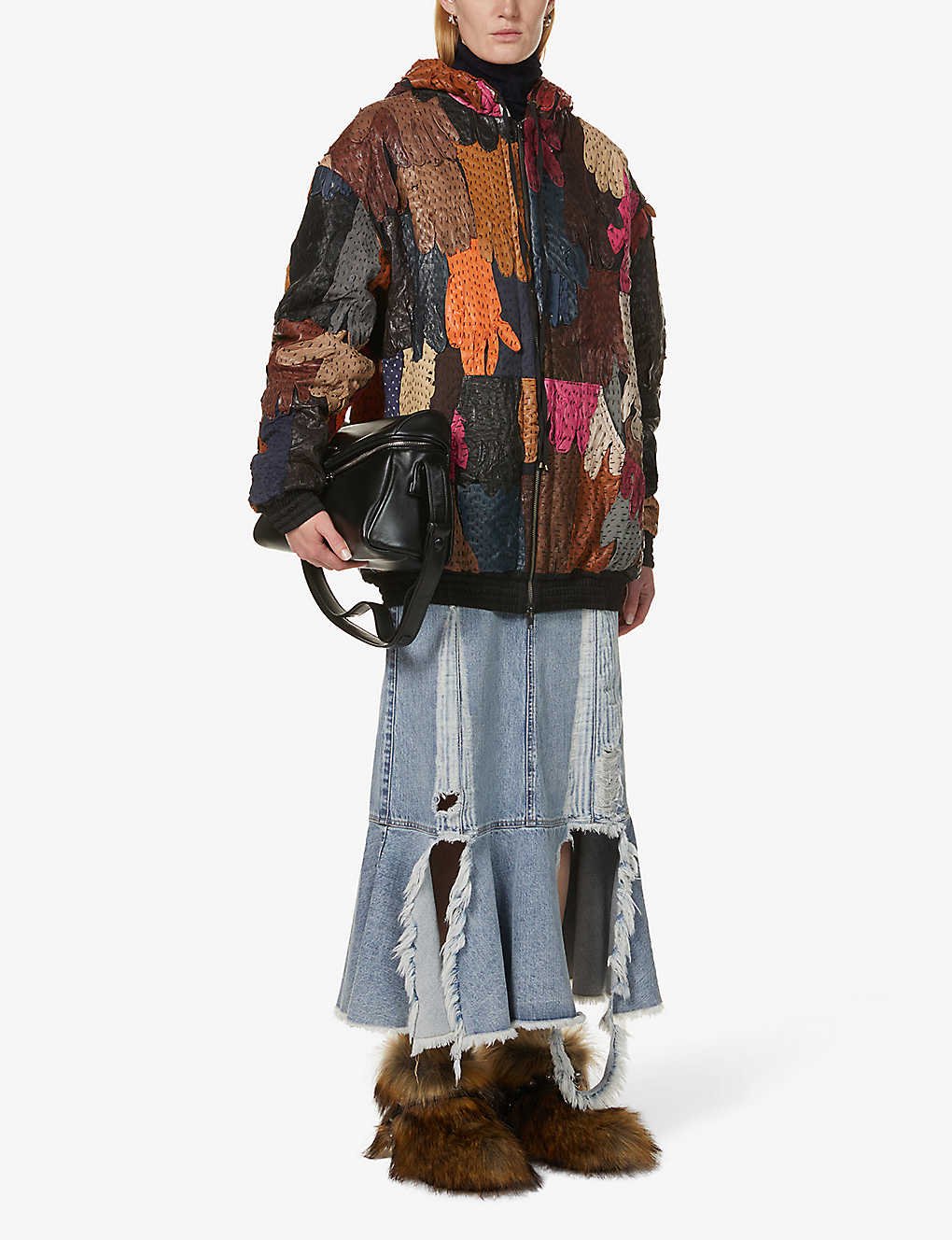
Superb silk and velvet embroideries take center stage, many of them Asian in provenance, stirring memory and imagination. Who first wore the butter-soft gloves? Who wore the slipper-satin gown when it was new? The magic of Walid is this: he treats these fragments of sartorial history with great reverence, yet irreverently. Foraged from the musty depths of family stashes, attics, estate sales, auctions and long-forgotten storage spaces, fierce, century-old dragons and shimmering phoenixes once again chase eternally flaming pearls across a shoulder, sleeve, or pocket. A shard of fraying lace no weightier than a sigh floats across a garment, held in place by invisible stitches. Why didn’t Walid use more of this exquisite lace? Because there simply was no more to be had. The finished garments are deliberately asymmetrical, giving a casual, modern feel to these surviving remnants of formal robes and glamorous evening clothes, often worked in metallic thread. And he’s not afraid of the purely goofy, evidenced in a rescued bit of vintage mink on a cuff and Muppet-like sandals lined with shaggy sheepskin shearling
Clothing is indeed ephemeral, even though Walid’s vision defies the current notion of fast fashion. The designer takes obvious joy in giving these textured textile stories one more gorgeous turn around the dance floor before they (and we) turn to dust. The reverent irreverence of these pieces lies in his charming willingness to show raw edges and visible mending, thus engaging his playful mix of components in a dynamic conversation of loss, disintegration, and becoming.
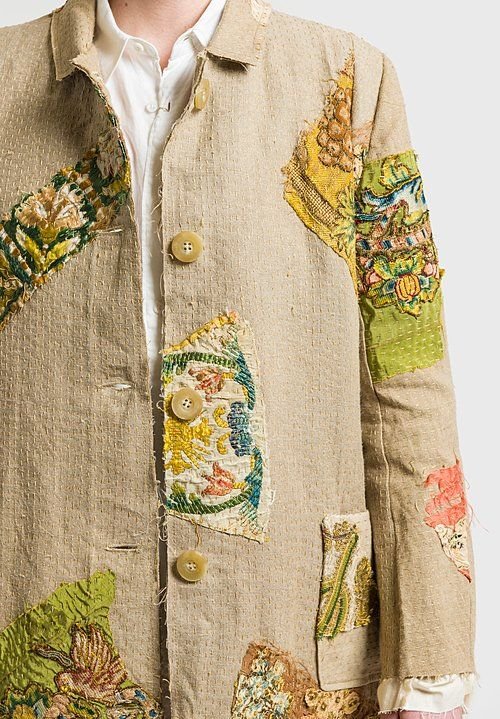
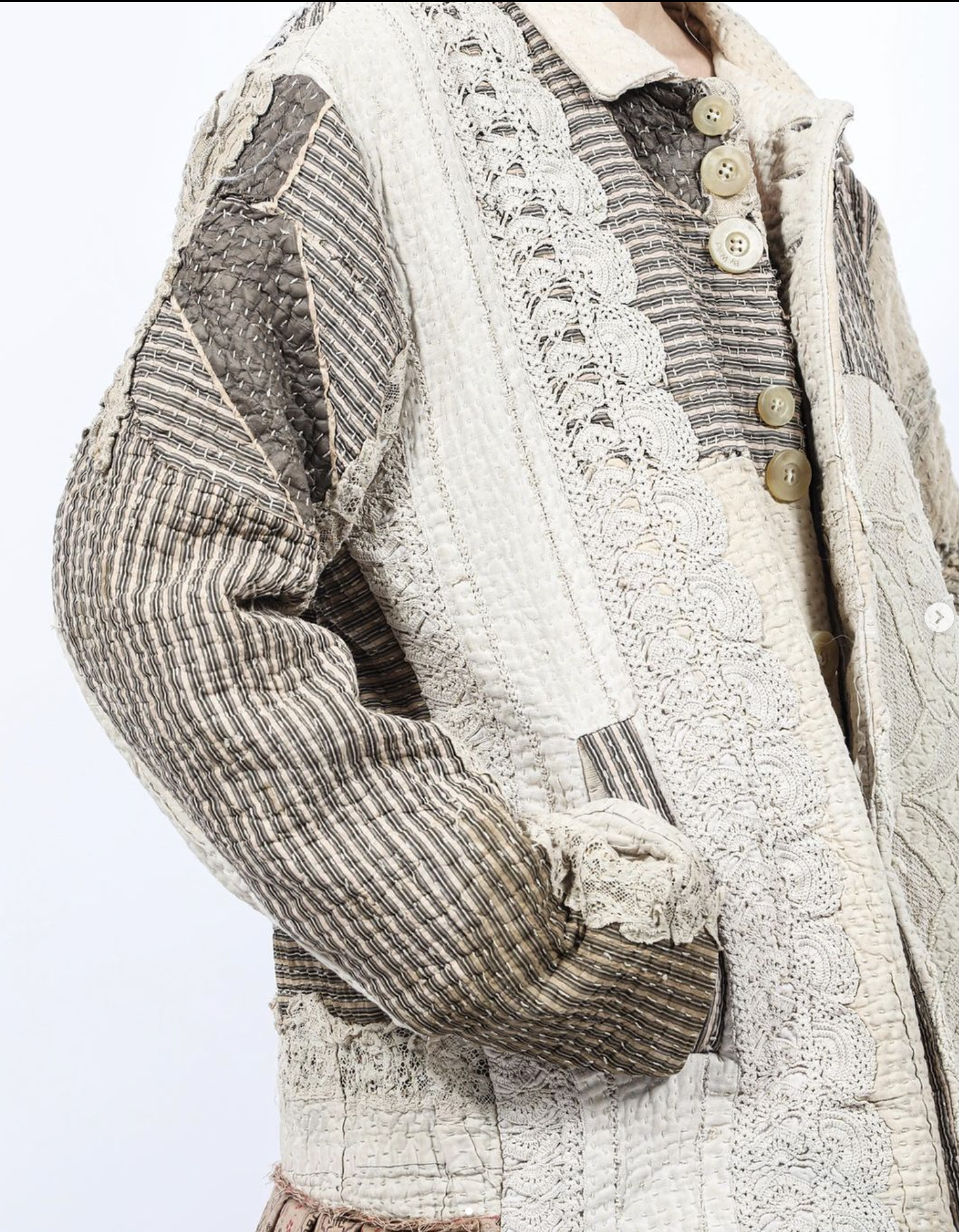
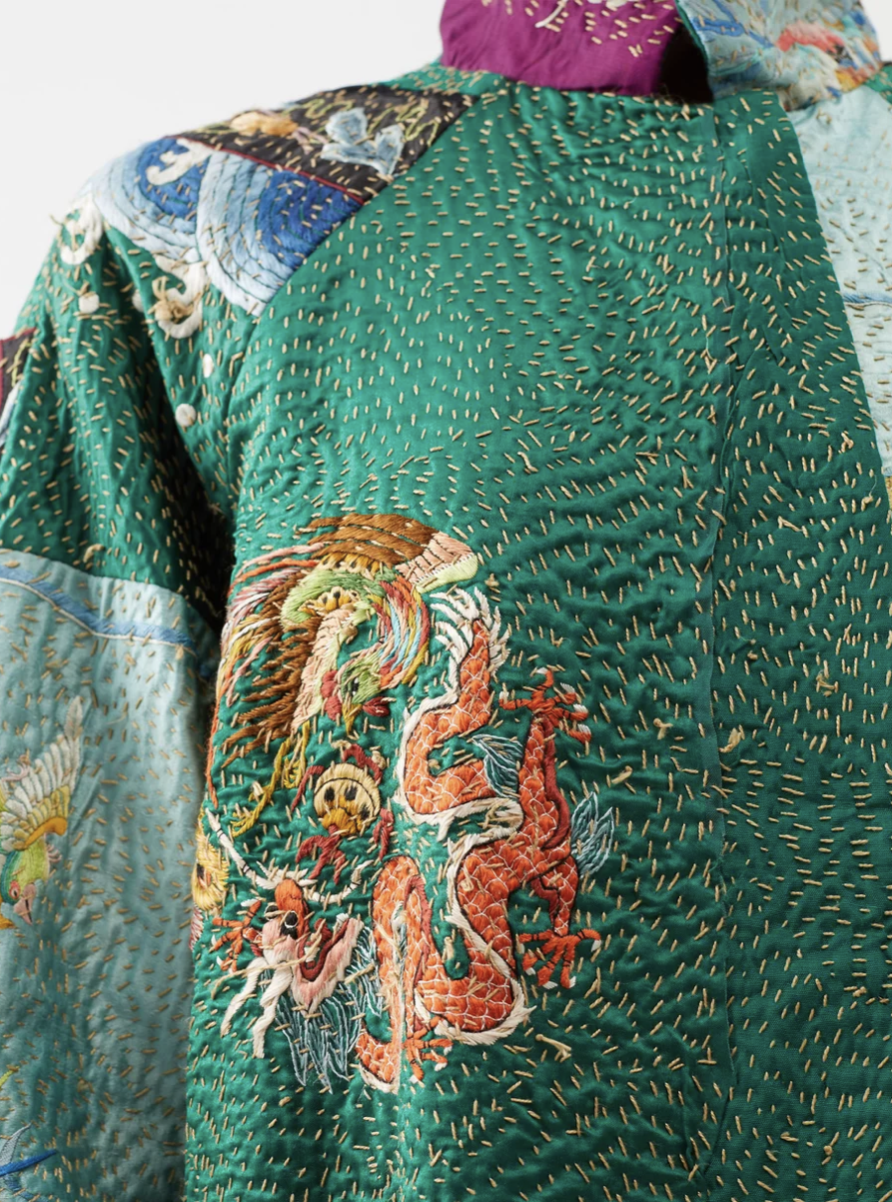

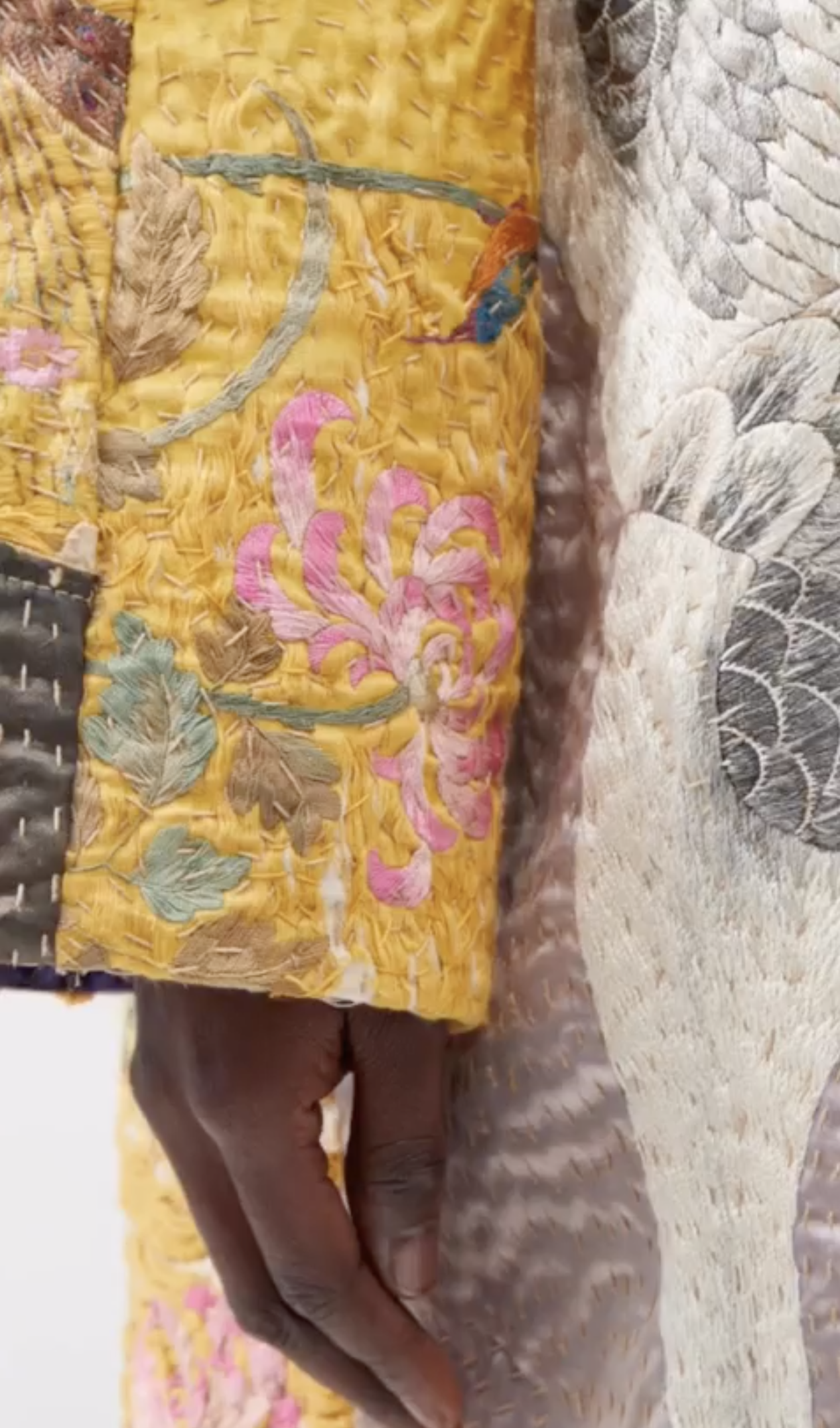
SPECIAL FOR SOOLIP READERS
Wanda Wisdom on Soolip Fix!
Our founder and creative mentor Wanda Wen practices Wabi Sabi, the philosophy celebrating imperfection and impermanence. Case in point, a beloved cashmere sweater that’s been munched by hungry moths. Here on the Soolip Fix, Wanda shows us how to patch the hole to prevent further unraveling, without trying to disguise the repair. Wanda selected luminous gold thread to close the gap in the black fabric, reminiscent of the Japanese art called kintsugi, where broken porcelain and pottery is repaired with gold to honor the gorgeous scar. View it here.
Soolip workshop, March 2023
Bring out your inner Walid!
Join Wanda and fashion designer Deborah Lindquist at Soolip in Los Angeles (1800 Bridgegate Street, No.104, Westlake Village) on Saturday, March 11, 10 AM - 12 PM for a very special of Hand & Heart workshop in Creative Hand-Stitching. Learn how to uplift, upcycle and personalize your favorite clothes! Bring a garment to reinvent. No prior sewing experience required. Register here.
All photos courtesy of Pexels.com






